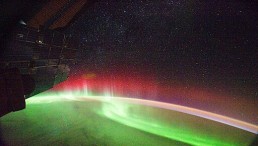A highly energetic cosmic ray was detected, allowing researchers to know more about it. While the source has remained unknown, experts have various ideas in mind about where it potentially came from.
Ultrahigh-Energy Cosmic Ray
Charged particles known as cosmic rays move across space at almost the speed of light. With the correct equipment, scientists can identify billions of secondary particles that are produced when they clash with gas molecules in the atmosphere upon arriving on Earth.
Cosmic rays have an extensive energy range. The source of most of the lowest energy cosmic rays scientists see is our sun, which emits electrons and other particles.
In contrast, intermediate energy cosmic rays are thought to originate from intense occurrences connected to our galaxy's supernovae or burst stars. However, the source of the highest energy cosmic rays is still unknown. The first detection of these particles, dubbed ultrahigh-energy cosmic rays (UHECRs), came in 1962.
Additionally, another ultra-high-energy cosmic ray with 240 exa-electron volts (EeV) was recorded, and it was reportedly comparable to the record-breaking "Oh My God particle" in 1991.
The energy of UHECRs is higher than one exa-electronvolt (EeV) or more than a million times higher than the energies of the strongest particle accelerators ever created by humans.
"The nature of the most powerful particle accelerators in the universe is a 60-year-old mystery," said Noemie Globus, one of the authors of the study, who is affiliated with the Institute of Physical and Chemical Research in Japan and the University of California, Santa Cruz.
The physics and acceleration processes of UHECRs are poorly understood. It is challenging to study them because they are so infrequently found. The highest energetic UHECRs are so rare that enormous detecting areas are needed for detectors to see them; rates are predicted to be fewer than one particle every century per square kilometer, or around 0.4 square miles.
"Particles of this energy are exceedingly rare," John Matthews, one of the co-authors, added.
UHECR Sources
Although their exact origins are still unknown, several potential sources have been proposed as UHECR sources. These include some of the most extreme occurrences in the universe, like gamma-ray bursts, active galactic nuclei, and black holes. The sources could potentially explain the origin of the rare phenomena.
Gamma-ray bursts are the brightest and biggest explosions from distant galaxies. GRB 221009A, detected in October 2022, was reportedly the brightest, earning the nickname "Brightest OF All Time" (BOAT). The flare was so strong that it was seen even if it was 2.4 billion light years away from Earth.
Active galactic nuclei are tight areas at some galaxies' centers that release enormous amounts of energy throughout the electromagnetic spectrum.
Black holes are areas of space-time where light cannot escape due to extreme gravity. NASA released the terrifying sound recording from a supermassive black hole to the world.
The sound waves from the black hole at the center of the Perseus cluster of galaxies had to be transposed up 57 and 58 octaves for humans to hear them. Like many space waves transformed into audio frequencies, the result is disturbing. It was unsettling as the black hole appeared quite enraged.
RELATED ARTICLE: Is the ISS Retiring? NASA Details Plans for Using Privately Developed Space Stations in the Future
Check out more news and information on Space in Science Times.














